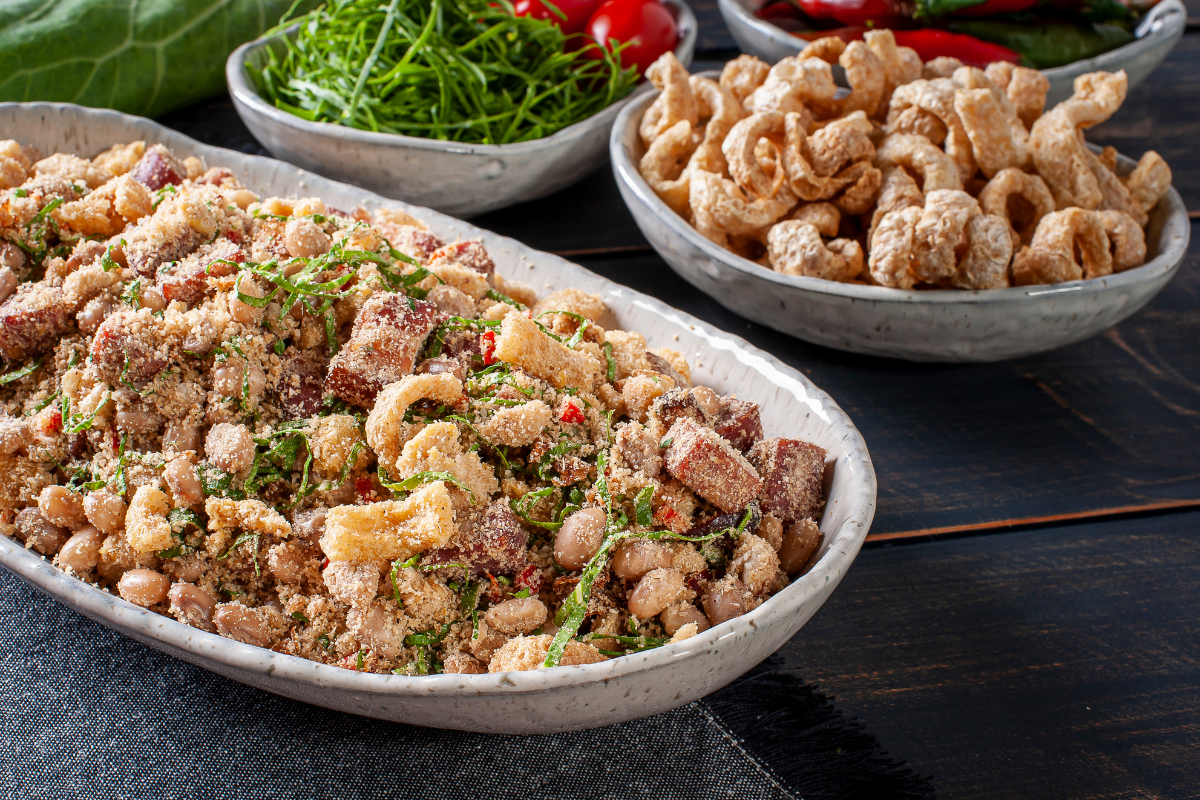
Barbecue season is in full swing, which means many of us have a fridge full of odds and ends of charred, smoky meats. Nobody wants to waste them, but it can be difficult to put together another meal from a few ribs and two remaining sausages. Enter arroz carreteiro, a flavorful Brazilian rice designed to incorporate those miscellaneous leftovers into one delicious, filling dish.
Where Does Arroz Carreteiro Come From?
Arroz carreteiro translates to “waggoner’s rice.” Like many of Brazil’s hearty stews and one-pot meals, this recipe originated with the gauchos of Southern Brazil. The country’s famous cattlemen were in need of quick and easy nourishment while traveling long distances. Like feiijao tropeiro and other dishes, arroz carreteiro frequently included non-perishable ingredients, like dried beef and cassava flour.
Today, arroz carreteiro is often eaten after a weekend of churrasco. Leftover cuts of meat and veggies are tossed in with perfect long-grain rice and topped with eggs, grated parmesan cheese, and parsley.
Do You Have to Use Leftover Meat for Arroz Carreteiro?
Of course not! The point of waggoner’s rice is largely to use up leftovers, but that doesn’t have to include meat. You can omit the barbecue leftovers in favor of other things you have in the fridge, like boiled eggs or roasted vegetables. Or, cook fresh portions of meat and add them in the same way you would the leftover meat (see instructions below).
What Kind of Rice Do I Need for Arroz Carreteiro?
In general, Brazilians prefer long grain white rice (jasmine, basmati, etc.). The reason for this is that the rice grains do not stick together. This allows the individual grains to be coated with flavors and has a less glutinous mouth feel.
You can use short grain rice if that is what you have, but be sure to rinse it several times to avoid it becoming too mushy as it cooks down. You will also need to slightly reduce the amount of liquid to account for the added moisture from rinsing. Dry rice should have a ratio of 1 cup of rice to 1.5 cups of liquid. Rinsed rice will need 1.25 cups of liquid for every one cup of rice.
Our arroz carreitero will need more water because we will be using more than just rice. We will simmer it a little longer to allow all the liquid to be absorbed.
Tips for Perfect Brazilian Rice
In addition to the right amount of liquid and the correct grain of rice, use the following tips to ensure the perfect rice for your arroz carreteiro:
- Use a large enough pot. Use a 2 quart stock pot for one cup of rice. Size up when cooking more.
- Keep the heat at a simmer. Once you’ve reached the initial boil, reduce the heat to a gentle simmer; you don’t want to boil the mixture for a prolonged amount of time, since it will reduce the liquid too quickly and undercook the rice.
- Don’t Remove the Lid. When your rice has around ten minutes left to cook, avoid removing the lid, if possible. Steam is important in cooking perfect arroz branco, and you don’t want to let any escape until it is done. A glass lid can be handy for this process so you can keep an eye on the rice without removing the lid.
Arroz Carreteiro Recipe (Brazilian Rice with Leftover Barbecue)
Ingredients:
1 cup long grain white rice
2 cups of leftover barbecue meat, shredded and/or cubed
2.5 cups water
½ yellow onion, chopped
½ red bell pepper, chopped
1 hot pepper, such as jalapeno or serrano, minced
2 cloves garlic, minced
2 hard boiled eggs
2 tbsp chopped fresh parsley
Extra virgin olive oil
Freshly ground black pepper
1 tsp paprika (not smoked)
Grated parmesan cheese
Salt to taste
Directions:
- Heat a large pot or deep skillet over medium heat.
- Add a drizzle of olive oil, and add in your chopped onion and peppers. Cook for 2-3 minutes, until tender.
- Add in the garlic and cook for a further thirty seconds, just until fragrant.
- Add in the barbecue meat, paprika, black pepper, and salt (we used 2 tsp).
- Pour in the rice and add the water. Stir to mix.
- Bring the mixture to a boil then reduce to medium-low heat.
- Cover the pot partly with the lid, don’t seal it yet.
- Cook the arroz carreteiro for about 25 minutes, until most of the liquid has been absorbed.
- When you don’t see any more liquid, turn the heat off and cover the rice completely with the lid. Let the steam work its magic for ten more minutes.
- Top the arroz with the chopped parsley and boiled egg. Add a generous amount of parmesan cheese on top, and serve piping hot.
Enjoy!
More Delicious Brazilian Recipes to Try:

